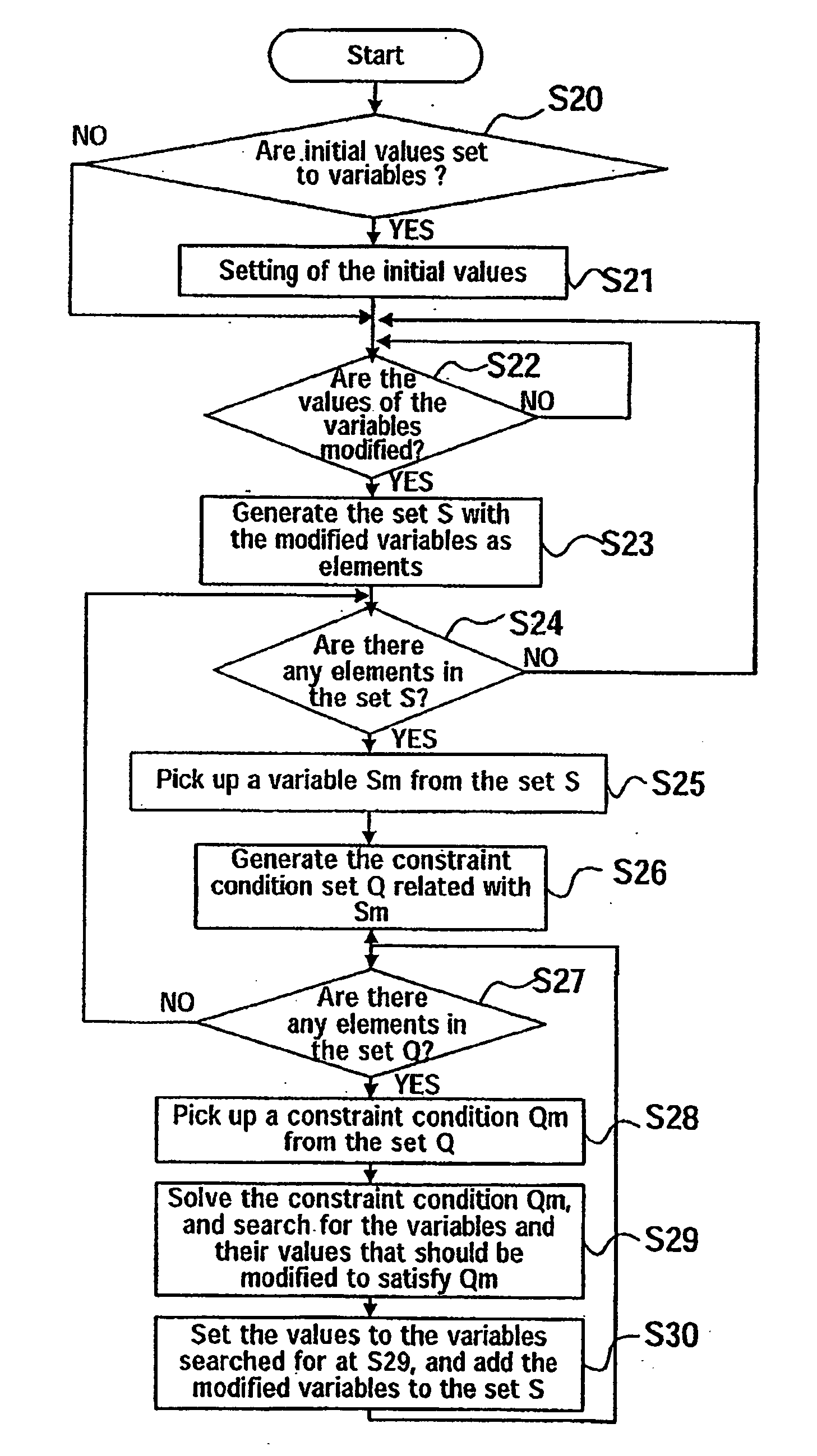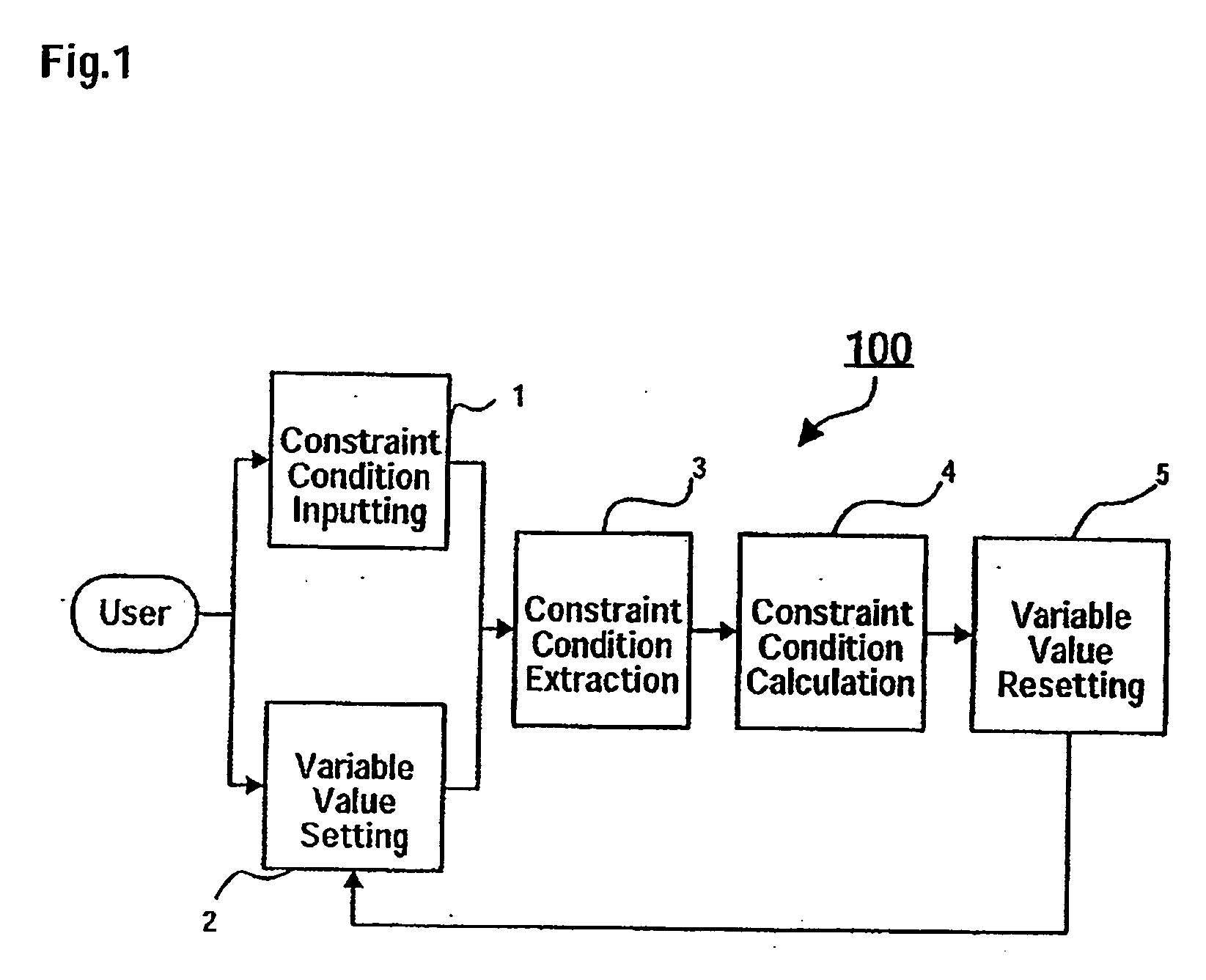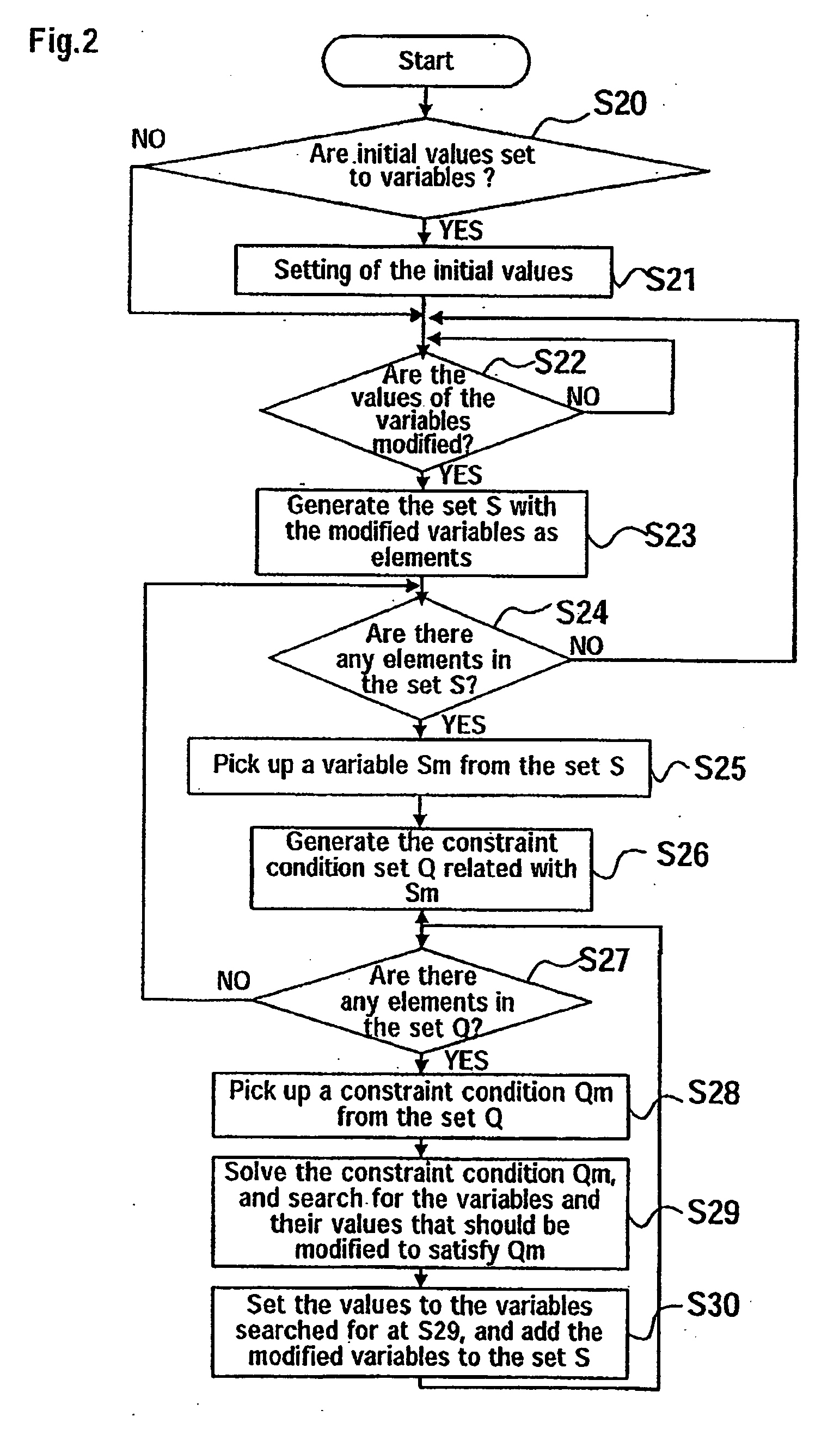Constraint-based solution method, constraint-based solver and constraint-based solution system
- Summary
- Abstract
- Description
- Claims
- Application Information
AI Technical Summary
Benefits of technology
Problems solved by technology
Method used
Image
Examples
first embodiment
The First Embodiment
[0064] At first, the basic configuration and the basic operation of the Constraint-based Solver in the first embodiment of the present invention will be explained.
Basic Configuration of the Constraint-based Solver 100
[0065]FIG. 1 is the overall configuration figure indicating the basic constituent elements of the Constraint-based Solver 100. As shown in FIG. 1, the Constraint-based Solver 100 includes Constraint Condition Inputting 1, Variable Value Setting 2, Constraint Condition Extraction 3, Constraint Condition Calculation 4, and Variable Value Resetting 5.
[0066] Constraint Condition Inputting 1 is to input the constraint conditions that the user decided to use through imagining the procedures of constraint propagation by the computer (CPU). Variable Value Setting 2 is to set up specific initial values that the user assigns for each variable that comprises the constraint constraints, which were input with Constraint Condition Inputting 1. Moreover, as desc...
second embodiment
The Second Embodiment
[0107] In the aforementioned first embodiment, as for the Constraint-based Solver 100, it is configured so that Constraint Condition Inputting 1, Variable Value Setting 2, Constraint Condition Extraction 3, Constraint Condition Calculation 4, and Variable Value Resetting 5 are included, but it is the characteristics of the Constraint-based Solver 200 in this embodiment, in addition to each configuration 1 to 5, that Constraint Condition Storage 6 and Variable Value Storage 7 are equipped. By the way, as for the common configuration parts between the configuration of the Constraint-based Solver 200 in this embodiment and that of the Constraint-based Solver 100 in the first embodiment, same signs are attached to such parts, and detailed explanation is to be omitted.
[0108] The overall configuration of the Constraint-based Solver 200 in this embodiment is shown in FIG. 3. Constraint Condition Storage 6 stores the constraint conditions that are input through Constra...
third embodiment
The Third Embodiment
[0118] As for the Constraint-based Solver 100 in the aforementioned first embodiment, it is configured so that Constraint Condition Inputting 1, Variable Value Setting 2, Constraint Condition Extraction 3, Constraint Condition Calculation 4, and Variable Value Resetting 5 are included, and as for the Constraint-based Solver 200 in the aforementioned second embodiment, it is configured so that additionally Constraint Condition Storage 6 and Variable Value Storage 7 are equipped, but as for the Constraint-based Solver 300, as shown in FIG. 8, it is characterized in that it is equipped with Function Definition Holding 9 and Function Definition Execution 10. The configuration of either of the Constraint-based Solver 100 in the first embodiment or the Constraint-based Solver 200 in the Second embodiment can be turned into the one which is additionally equipped with Function Definition Holding 9 and Function Definition Execution 10, but to simplify the explanation, the...
PUM
 Login to View More
Login to View More Abstract
Description
Claims
Application Information
 Login to View More
Login to View More - R&D
- Intellectual Property
- Life Sciences
- Materials
- Tech Scout
- Unparalleled Data Quality
- Higher Quality Content
- 60% Fewer Hallucinations
Browse by: Latest US Patents, China's latest patents, Technical Efficacy Thesaurus, Application Domain, Technology Topic, Popular Technical Reports.
© 2025 PatSnap. All rights reserved.Legal|Privacy policy|Modern Slavery Act Transparency Statement|Sitemap|About US| Contact US: help@patsnap.com



